1926-1942
The College District is Established: 1926
An election to establish the San Bernardino Valley Union Junior College District was held on March 26, 1926. With no formal opposition to the formation of the college, the issue carried by an overwhelming majority: 3,079 to 118, or nearly 30 to 1. The first Board of Trustees was elected on May 7 of the same year. The five nominees (E. M. Lash, N. A. Richardson, Frank H. Binney, T. Fred Robbins and Charles J. O'Connor) ran unopposed, and were elected by a small voter turnout.
On June 23, 1926, the Board of Trustees met at a site on the east side of Mt. Vernon
Avenue, about equidistant between the downtown areas of San Bernardino and Colton.
It was suggested that about thirty acres in the northwestern section of the parcel
being inspected would provide the ideal location for the new college, and the Board
directed that an appraisal be made. About a month later, an offer was made to the
owners, Swan and Barton, to purchase the desired land for $1,500 an acre, contingent
upon voter approval of a bond issue. The offer was accepted in early August, and an
election was called for September 23 to vote bonds in the amount of $485,000 to cover
the costs of the land purchase and the initial building construction. The bond issue
passed by a vote of nearly 25 to 1 (3,512 to 141).
On the New Campus: The Jantzen Years, 1926-1929
George H. Jantzen, Superintendent of Schools of the Colton District and principal of Colton High School, was appointed Dean of the College, a title that was later changed to "President." Without a campus of its own, Valley College had to schedule classes during its first year (1926-1927) at San Bernardino High School and Colton High School.
When classes began during the 1927-1928 academic year, the Administration Building (then called the "Classics Building") had been completed. Classes were carried on in the midst of construction, and by the end of the school year, the Life Science Building (then called the "Science Building"), the Gymnasium and the Library had also been completed.

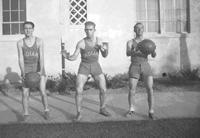
The 1927-1928 faculty was made up of eleven men and six women. Nearly 300 students enrolled for the fall semester of 1927, with the freshmen outnumbering the sophomores nearly six to one. Fifty-four courses were offered, nearly all with a strong academic orientation. A number of college clubs were organized, including Y'se Women, La Sociadad Hispanica, the Indian Paint Brush (Art), Sock and Buskin (Drama), the Forensics Club, the Honor Society, a Women's Athletic Association, and a Junior Lions' Club. A number of dances, parties, teas and receptions were scheduled throughout the year, and newspaper accounts of the time indicate that they were usually well attended.
A building housing a cafeteria opened across Mt. Vernon Avenue, but the most popular off-campus hangout was "Nick's." Not only was it popular for its milk shakes, but for the music from an old phonograph and from an even greater attraction, a new radio.
Local reporters first referred to the Valley College football team as the "Jaysees" or the "Renfromen" (in honor of Coach M. P. "Pinky" Renfro). Searching for a shorter, catchier name, one reporter called them the "Wrens," and the community quickly accepted the nickname, although the student body never officially adopted it. The "Wrens" became the "Indians" in the fall of 1927. The inspiration for the new name was attributed to the reported discovery of an Indian burial ground while excavating for the original building. In keeping with the new name, the college newspaper changed its name from "The Jaysee" to the "Warwhoop."
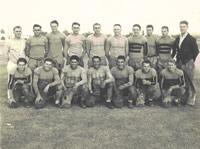
The Griffing Presidency, 1929-1933
President Jantzen resigned his position effective July 31, 1929, and Professor John
B. Griffing, an instructor in psychology and sociology, was appointed as his successor.
A fifth building was added to the campus in 1929, with the completion of a "Social
Hall," the name given to the first campus center or student union. The astronomical
observatory was completed in 1930.
Student enrollment continued to increase, with over 700 day students registered in
the fall of 1932. Most students planned to transfer to four-year schools, and the
curriculum continued to emphasize academic subjects.
The need for extensive parking lots was not of great concern during these early years. Students using public transportation to the college made use of the Pacific Electric streetcars, which passed the college along Mt. Vernon Avenue.
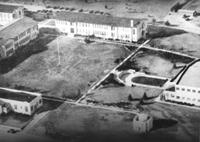
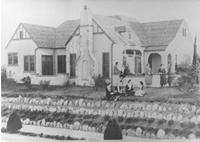
The college felt the effects of the great economic depression of the early 1930s in a number of ways. In February 1932, Trustee Andrews was asked to identify ways the campus might be able to economize in the costs associated with the care of the grounds and buildings.
Further purchases of books for the library were deferred. In May 1932, the faculty passed a resolution offering to accept a 5% reduction in salary, which was gratefully accepted by the Board. In May of 1933, conditions were even bleaker. Only seventeen instructors received assurances of a full-time job. Nine more received promises of at least half-time employment, and four received notices of termination. When salaries were finally adopted in June, all faculty who were receiving more than $175 per month had their salaries reduced 10%. Under those conditions, most of the staff was retained.
In June of 1933, President Griffing submitted his resignation, stating that his health did not permit him to carry the burden of the position. He requested that he be retained as a regular teaching faculty member for the ensuring year, and the Board approved this request. Mr. Griffing left the campus in January 1934 to become the Educational Adviser for the 9th Army Corps Area. He later served four years in Brazil as the president of an agricultural college, and then returned to the United States to head the Department of Education at Tempe State Normal in Arizona (now Arizona State University).
The Ricciardi Presidency, 1933-1942
The college's third president, Nicholas Ricciardi, came to San Bernardino with a reputation as an outstanding authority on vocational education. Enrollment during this period was relatively stable, fluctuating between 700 and 1,000 students per semester. Hazing of new students was an expected and accepted practice during the first weeks of each academic year. Such good-natured harassment generally ended with the annual Freshmen-Sophomore pushball context, usually won by the sophomores.
Students and faculty had a strong feeling of community, and many social events were scheduled, including a Christmas formal, co-ed pajama parties, and a beard-growing contest.
Additional buildings were added to the campus during the Ricciardi years. The Works Progress Administration (WPA) funded construction of the auditorium. From 1936 to 1938, this project provided employment for over 500 men in the area, resulting in the most distinctive and architecturally beautiful building on the campus. The auditorium was accepted by the Board in October 1938, and during that same month, the Drama Department presented Shakespeare's "As You Like it" as the first production in the new facility. In other construction projects, State Emergency Relief Administration funds were obtained to construct a Greek Theatre, and WPA funds were used to fund concrete bleachers for the stadium and a new vocational building.
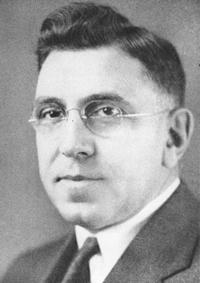

During his last year at Valley College, President Ricciardi established a separate Evening College, made up of three divisions: vocational arts, social arts, and professional arts. Nora Parker Coy, originally employed as an English instructor, was named director of the new program.

